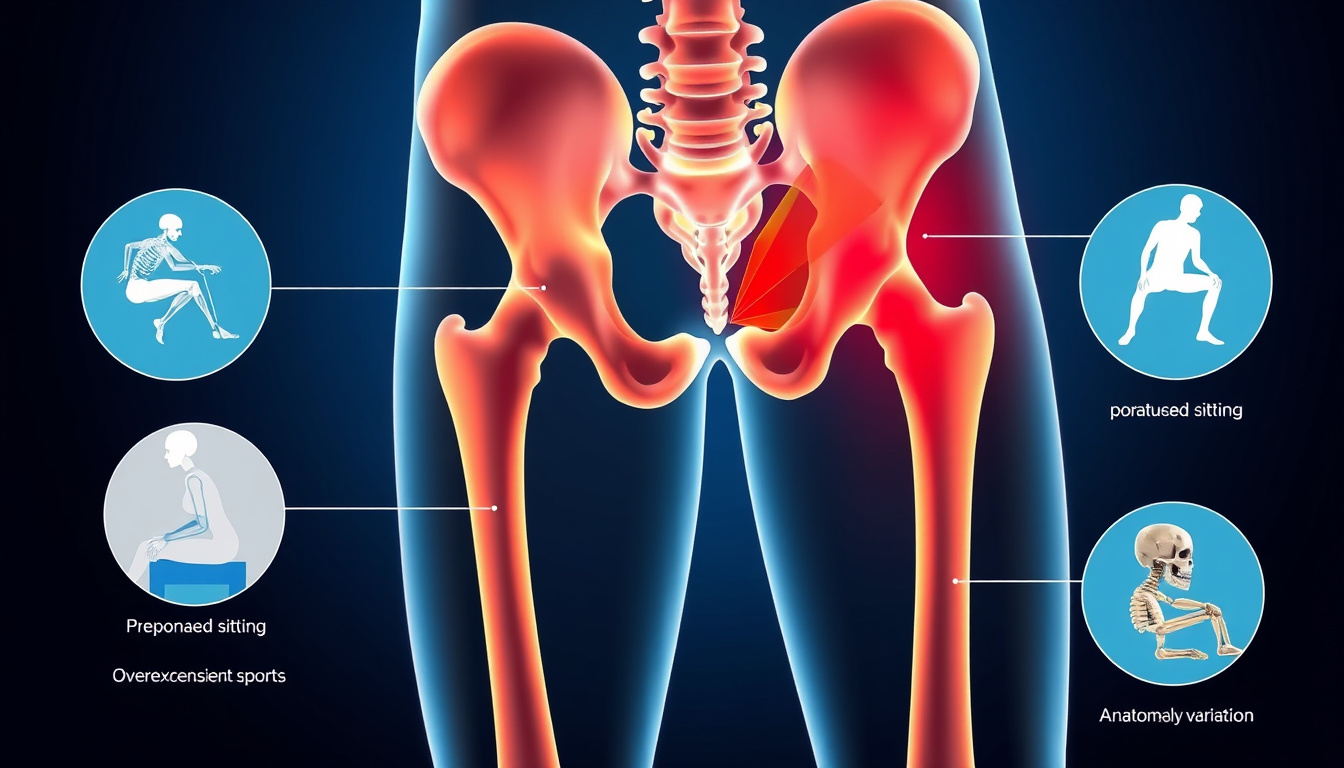
09 Apr Unlocking Relief: Understanding Piriformis Syndrome and Effective Treatment Strategies
Piriformis Syndrome is an often-overlooked condition that can significantly impact your daily life, causing discomfort and limiting mobility. This syndrome occurs when the piriformis muscle, located deep in the buttock, tightens or spasms, leading to sciatic nerve irritation. Understanding Piriformis Syndrome—its symptoms, causes, and effective treatment strategies—can be the key to reclaiming your comfort and movement. In this article, we’ll dive into the nuances of Piriformis Syndrome, elucidate its diagnosis, explore risk factors, and outline both conservative and proactive measures to mitigate the discomfort associated with this condition.


Causes and Risk Factors Associated with Piriformis Syndrome
Piriformis Syndrome is a neuromuscular disorder characterized by pain in the buttock region, which can radiate down the leg due to compression of the sciatic nerve by the piriformis muscle. Understanding the causes and risk factors associated with Piriformis Syndrome is crucial for effective prevention and management. This condition can arise from a variety of factors, including prolonged sitting, injury, or overuse during physical activities. Athletes, particularly runners and cyclists, are often at higher risk due to repetitive movements that may lead to tightness in the piriformis muscle. Additionally, anatomical variations, such as the position of the sciatic nerve or the piriformis muscle, can make some individuals more susceptible to this syndrome. Other potential risk factors include muscle imbalances, excessive training without proper stretching, and conditions such as arthritis or sciatica, which may further irritate the area. By being aware of these causes and risk factors, individuals can take proactive steps to reduce their risk of developing Piriformis Syndrome.
Effective Treatment Strategies for Piriformis Syndrome
Piriformis Syndrome is a condition that occurs when the piriformis muscle, located deep in the buttock, spasms and irritates the nearby sciatic nerve. This can lead to pain, tingling, or numbness in the buttocks and down the leg. Understanding effective treatment strategies for Piriformis Syndrome is crucial for managing symptoms and improving mobility. A comprehensive approach often includes physical therapy, which focuses on stretching and strengthening exercises tailored to relieve pressure on the sciatic nerve. Additionally, incorporating foam rolling or massage techniques may help alleviate muscle tightness in the affected area. For some individuals, over-the-counter anti-inflammatory medication can reduce pain and inflammation. In severe cases, a healthcare provider might recommend corticosteroid injections or, in rare instances, surgery. It’s essential to consult a physician for a personalized treatment plan that addresses your specific symptoms and health needs to effectively combat Piriformis Syndrome.

Preventive Measures and Lifestyle Changes
Piriformis Syndrome is a condition that can lead to persistent pain and discomfort in the buttocks, often affecting the sciatic nerve and resulting in radiating pain down the leg. To mitigate the risk of developing this condition, several preventive measures and lifestyle changes are essential. First and foremost, incorporating regular stretching and strengthening exercises into your routine can significantly enhance the flexibility and strength of the gluteal muscles. Engaging in activities like yoga or targeted physical therapy can help alleviate tightness in the piriformis muscle. Additionally, maintaining proper posture, especially during prolonged periods of sitting, is crucial; consider investing in ergonomic chairs and taking regular breaks to stand and stretch. Weight management also plays a vital role, as excess weight can put additional strain on the musculoskeletal system. Finally, being mindful of your physical activity and avoiding excessive repetitive movements will help in warding off Piriformis Syndrome, ensuring a healthy and active lifestyle.
When to Seek Professional Help for Piriformis Syndrome
Piriformis Syndrome is a condition that occurs when the piriformis muscle, located in the buttock region, compresses the sciatic nerve, leading to pain, tingling, and discomfort. While mild symptoms can often be managed with rest, stretching, or over-the-counter pain relief, there are critical indicators that suggest it may be time to seek professional help. If you experience persistent pain that doesn’t improve over time, severe discomfort that radiates down the leg, or if you encounter weakness in the leg, it is advisable to consult a healthcare professional. Additionally, if your symptoms interfere with daily activities, or if you notice changes in bladder or bowel function, prompt medical attention is crucial. A specialized treatment plan, which may include physical therapy, medication, or injections, can help alleviate symptoms and address the underlying causes of Piriformis Syndrome effectively.

Sorry, the comment form is closed at this time.